
Plankton are the diverse collection of organisms that drift in water but are unable to actively propel themselves against currents. The individual organisms constituting plankton are called plankters. In the ocean, they provide a crucial source of food to many small and large aquatic organisms, such as bivalves, fish, and baleen whales.

An algal bloom or algae bloom is a rapid increase or accumulation in the population of algae in freshwater or marine water systems. It is often recognized by the discoloration in the water from the algae's pigments. The term algae encompasses many types of aquatic photosynthetic organisms, both macroscopic multicellular organisms like seaweed and microscopic unicellular organisms like cyanobacteria. Algal bloom commonly refers to the rapid growth of microscopic unicellular algae, not macroscopic algae. An example of a macroscopic algal bloom is a kelp forest.

Zooplankton are the animal component of the planktonic community, having to consume other organisms to thrive. Plankton are aquatic organisms that are unable to swim effectively against currents. Consequently, they drift or are carried along by currents in the ocean, or by currents in seas, lakes or rivers.
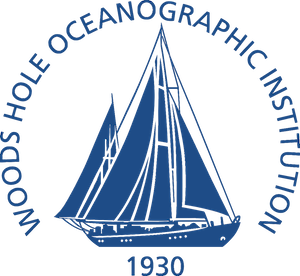
The Woods Hole Oceanographic Institution is a private, nonprofit research and higher education facility dedicated to the study of marine science and engineering.

The Continuous Plankton Recorder (CPR) Survey is one of the longest running marine biological monitoring programmes in the world. Started in 1931 by Sir Alister Hardy and Sir Cyril Lucas, the Survey provides marine scientists and policy-makers with measures of plankton communities, coupled with ocean physical, biological and chemical observations, on a pan-oceanic scale. The Survey is a globally recognised leader on the impacts of environmental change on the health of our oceans.

The Australian Continuous Plankton Recorder (AusCPR) survey is a joint project of the CSIRO and the Australian Antarctic Division, DEWHA, to monitor plankton communities as a guide to the health of Australia's oceans.
The Center for Microbial Oceanography (C-MORE) is a research and education organization established in 2006 as a National Science Foundation funded Science and Technology Center.

The North Pacific Subtropical Gyre (NPSG) is the largest contiguous ecosystem on earth. In oceanography, a subtropical gyre is a ring-like system of ocean currents rotating clockwise in the Northern Hemisphere and counterclockwise in the Southern Hemisphere caused by the Coriolis Effect. They generally form in large open ocean areas that lie between land masses.
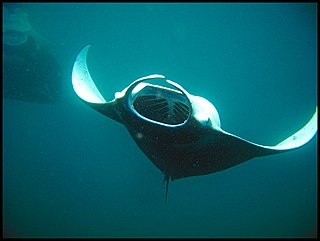
A planktivore is an aquatic organism that feeds on planktonic food, including zooplankton and phytoplankton. Planktivorous organisms encompass a range of some of the planet's smallest to largest multicellular animals in both the present day and in the past billion years; basking sharks and copepods are just two examples of giant and microscopic organisms that feed upon plankton.

Particulate organic matter (POM) is a fraction of total organic matter operationally defined as that which does not pass through a filter pore size that typically ranges in size from 0.053 millimeters (53 μm) to 2 millimeters.

Alan Reece Longhurst was a British-born Canadian oceanographer who invented the Longhurst-Hardy Plankton Recorder, and is widely known for his contributions to the primary scientific literature, together with his numerous monographs, most notably the "Ecological Geography of the Sea". He led an effort that produced the first estimate of global primary production in the oceans using satellite imagery, and also quantified vertical carbon flux through the planktonic ecosystem via the biological pump. In later life he offered several critical reviews of several aspects of fishery management science and climate change science.
Deborah K. Steinberg is an American Antarctic biological oceanographer who works on interdisciplinary oceanographic research programs. Steinberg's research focuses on the role that zooplankton play in marine food webs and the global carbon cycle, and how these small drifting animals are affected by changes in climate.
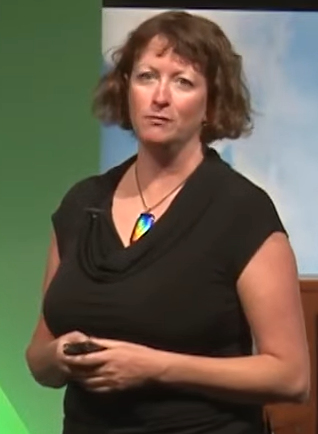
Beth N. Orcutt is an American oceanographer whose research focuses on the microbial life of the ocean floor. As of 2012, she is a senior research scientist at the Bigelow Laboratory for Ocean Sciences. She is also a senior scientist of the Center for Dark Energy Biosphere Investigations, a Science and Technology Center funded by the National Science Foundation and headquartered at the University of Southern California and part of the Deep Carbon Observatory Deep Life Community. Orcutt has made fundamental contributions to the study of life below the seafloor, particularly in oceanic crust and has worked with the International Scientific Ocean Drilling Program.

Heidi Sosik is an American biologist, oceanographer, and inventor based at the Woods Hole Oceanographic Institution.

A marine food web is a food web of marine life. At the base of the ocean food web are single-celled algae and other plant-like organisms known as phytoplankton. The second trophic level is occupied by zooplankton which feed off the phytoplankton. Higher order consumers complete the web. There has been increasing recognition in recent years that marine microorganisms.
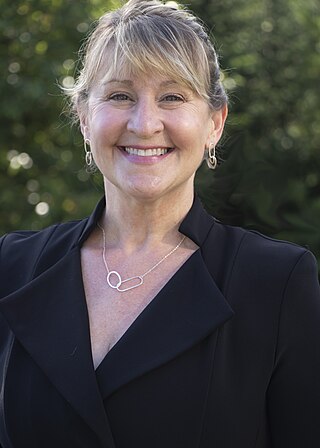
Deborah Ann Bronk is an American oceanographer and the president and CEO of Bigelow Laboratory for Ocean Sciences. She leads the nonprofit research institution in East Boothbay, Maine in its mission to understand the ocean's microbial engine and to harness the potential of these and other organisms at the base of the ocean food web through research, education, and innovation.
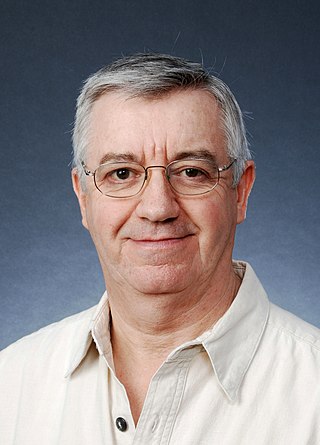
Trevor Charles Platt was a British and Canadian biological oceanographer who was distinguished for his fundamental contributions to quantifying primary production by phytoplankton at various scales of space and time in the ocean.
David Michael Karl is an American microbial biologist and oceanographer. He is the Victor and Peggy Brandstrom Pavel Professor of Microbial Oceanography at the University of Hawaiʻi at Mānoa and the Director of the University Center for Microbial Oceanography: Research and Education.
Clarice Morel Yentsch is a scientist, author, education and museum professional, and community benefactor. As a scientist, she pioneered the use of flow cytometry to investigate marine phytoplankton and co-founded Bigelow Laboratory for Ocean Sciences.
Patricia Ana Matrai is a marine scientist known for her work on the cycling of sulfur. She is a senior research scientist at Bigelow Laboratory for Ocean Sciences.














